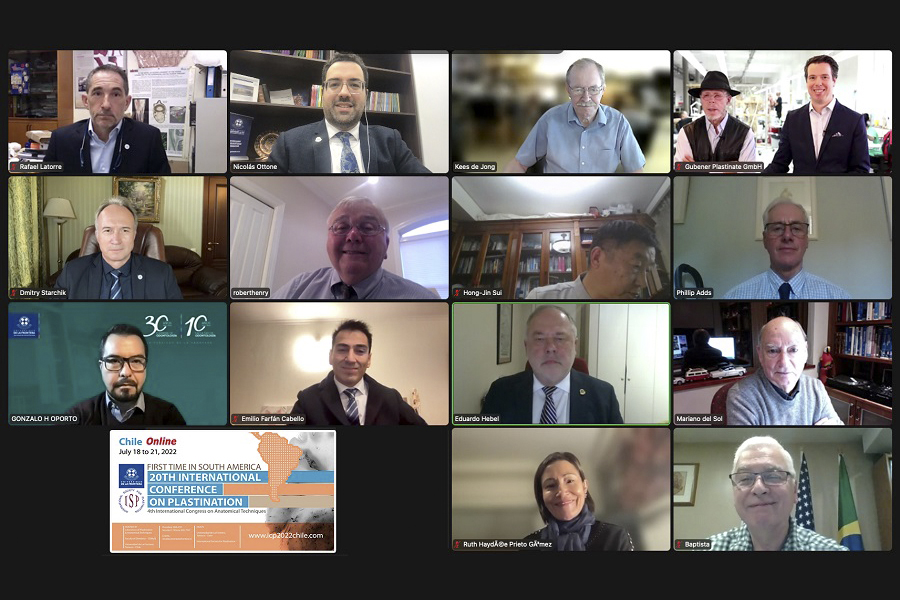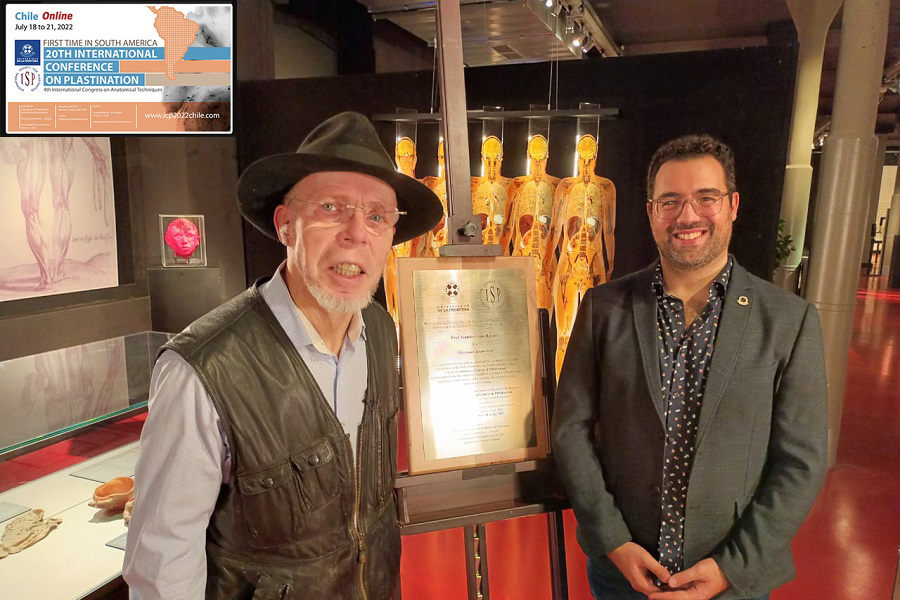|
The 20th International Conference on Plastination and 4th International Congress on Anatomical Techniques, organized in South America for the first time by the Universidad de La Frontera (UFRO) and the International Society for Plastination (ISP), took place online. |
Outstanding speakers came together at the scientific event, where they addressed issues related to the plastination fundamentals, education, clinical application and research, as well as classical anatomical techniques and human donation. One of the participants at the inauguration of the conference was the renowned inventor of plastination, Dr. Gunther von Hagens, who received a recognition from the Universidad de La Frontera (UFRO) and the International Society for Plastination (ISP) for his outstanding career and contribution to the field of anatomy and morphological sciences and for the creation of this revolutionary technique. The official award ceremony took place in Germany, before the congress, in presence of Dr. Nicolás Ottone, the director of the Laboratory of Plastination and Anatomical Techniques of UFRO and president of the Congress, who awarded Dr. Gunther von Hagens with this recognition. “We were able to witness two great moments at this event. One of them was the inauguration of the conference, with the presence of Prof. Dr. Gunther von Hagens, who made possible the first International Plastination Conference in Texas (USA), in 1982. And the second one was the transmission of his recognition for the creation of plastination, a technique that has revolutionized teaching and research in anatomy, as well as the way of showing society the wonder and perfection of the human and animal body. I went to Germany to hand this recognition over to Dr. von Hagens in person, on behalf of the Universidad de La Frontera and the International Society for Plastination,” Dr. Nicolás Ottone said. Plastination, he added, “was a great revolution in the field of morphology, because it allows preserving the samples forever and also solves the problem of the availability of bodies for teaching, studies and research in morphology. That is also why we always encourage and promote the donation of bodies to universities. This technique solves major problems and makes it possible to generate unique pieces in terms of the quality of dissection and the conservation we can obtain”. This year, the speakers and participants came from different universities in the United States, China, Germany, Turkey, New Zealand, Russia, Brazil, Chile, Spain, Peru, Costa Rica and Mexico. “More than 100 participants from 43 different countries on all continents attended the conference on plastination, what reflects the internationalization of the technique. I would like to stress the great participation of academics and students from South America, and from our faculty, especially in the 23 oral presentations. That confirms the great work we develop at UFRO, regarding the dissemination of plastination through our plastination workshops, our certification course in anatomical techniques and our presence in the different anatomy congresses. Our objective is to continue with this development and the application of plastination, as well as with diverse other anatomical techniques in all universities,” Dr. Ottone pointed out. Written by: Soledad Millapan Sandoval |






